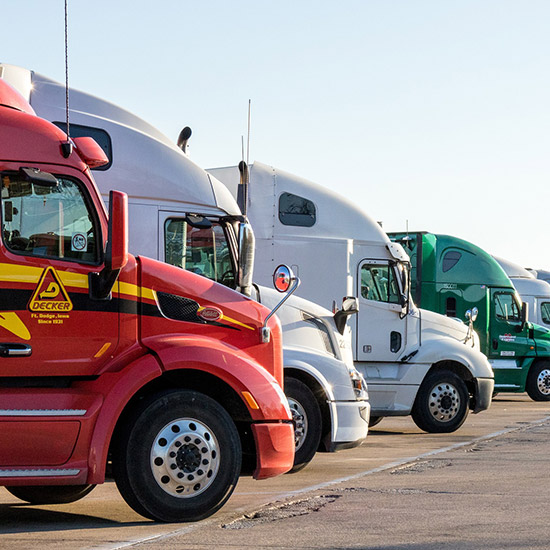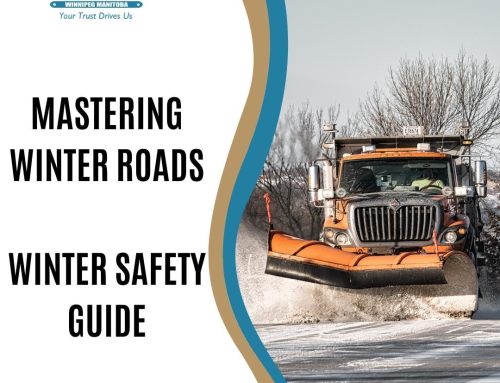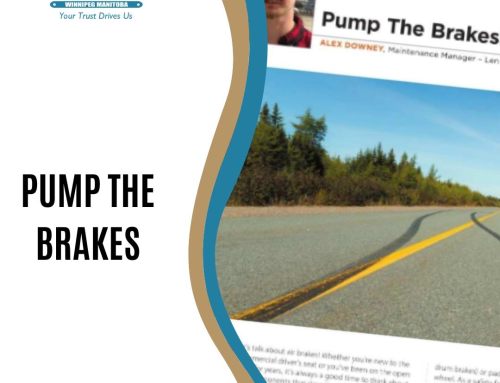 Developing good habits helps you become a better, safer, and more professional truck driver for the long haul. There are a lot of skills involved in getting your truck from point A to point B, and the best drivers can do that accident-free.
Developing good habits helps you become a better, safer, and more professional truck driver for the long haul. There are a lot of skills involved in getting your truck from point A to point B, and the best drivers can do that accident-free.
Become an accident-free driver. Here are just a few tips and reminders to get you moving down the road safely.
Plan Out your Trip
Safety begins before you ever get into your truck and proper trip planning is a must! Know your route and the weather predictions and keep up with them. Weather is a big factor in road-way accidence, although bad weather is no excuse.
When you find yourself in adverse weather, the easiest way to prevent an accident is to shut down. Safety is your responsibility. Often, we can drive through adverse conditions but if the road or conditions are too bad to continue – shut it down. Remember to keep dispatch and affected clients up to date with any delays as soon as possible.
We have trip planning tips here.
Take your Time
Truck driving is a stressful career. Tight time schedule, dealing with clients, and, let’s be honest, dealing with horrible drivers.
Those are only a few of your everyday stressors, so it can be easy in the rush of things to take your time. Every move you make should be done with confidence and done methodically. Think about what you are doing and take your time. You’re not saving any significant time by rushing.
Keep an Eye Out
Be aware of everything happening around you and don’t become too confident around familiar surroundings.
When you frequent the same places, drivers can get “lazy” and assume that everything is the same as the last time they were there. Drivers can take for granted that there are no obstacles. It is essential always to keep an eye out and not become complacent when making deliveries, picking up, leaving or returning from the home yard, or hitting any regular stops along the way.
Be Aware of your Blind Spots
There are many people out there that are not aware of the blind spots around big trucks. Our vehicles are extremely large, generally 72 feet long, making it impossible for drivers to clearly see all the areas around them. Drivers must take a lot of care to identify where other vehicles are around them and learn to anticipate their movements. Developing a “sixth sense” about the movements of the vehicles around you will help you prepare for and avoid accidents.
Directions and Maps
There are multiple ways for you to decide on your route and get directions. The critical thing to do is to factor their importance and even use them all.
Always call the customer to ask for directions. Shipping and receiving departments will often know the truck routes to their facility or know the best route for big trucks.
Double check your route using Google Maps (try using the Satellite View) to decide on the best route. By using the Satellite View, you can get a clear view of where you are going and identify any trouble spots along the way. Also, Google Maps can be more reliable than any other GPS. You can also use a good trucker GPS as well as Google Maps. Using two electronic maps gives you more information to make local routing decisions.
Buy a good ‘ol fashioned atlas. Technology has come a long way and it’s hard to imagine trucking before electronic online mapping. It’s great until your device stops working or you can’t get cell service. Plus the Rand McNally truckers atlas’ allow you to see secondary highways where trucks are allowed. Old school routing will come in handy from time to time.
Study the Delivery Area
This can playback into taking your time. Find a safe place to park so you can walk around the delivery area, so you know what you’re dealing with. Look where you will be backing the trailer, search for obstacles and find where the room available to use for backing. Make a game plan before you start your set up to back into a dock.
Spotters aren’t Always Helpful
When making deliveries and pickups, dock workers or other drivers often offer to spot your back. While this may be helpful in some situations, you must be cautious involving spotters. It’s better to not use spotters and stop and physically get out and look for yourself. Stopping while backing to take a look is not a rookie move – it’s pro!
Often, spotters do not know how a truck and trailer maneuver and they rarely focused on more than one spot of your vehicle at a time. Remember that you are the one responsible for backing safely and avoiding any obstacles in your way. Familiarize yourself with the back and get out often if necessary, to ensure you are still on track.





